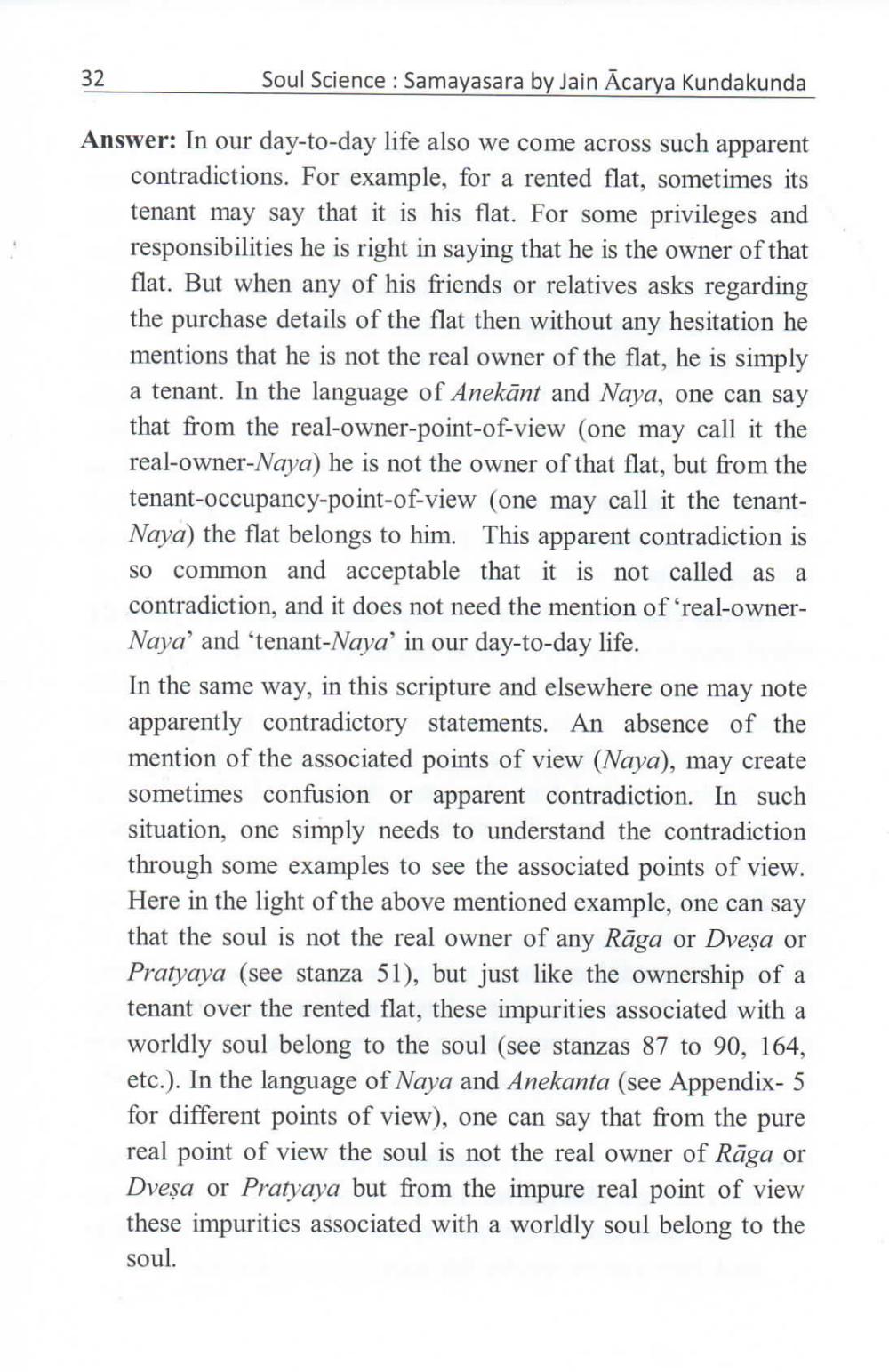________________
Soul Science: Samayasara by Jain Acarya Kundakunda
Answer: In our day-to-day life also we come across such apparent contradictions. For example, for a rented flat, sometimes its tenant may say that it is his flat. For some privileges and responsibilities he is right in saying that he is the owner of that flat. But when any of his friends or relatives asks regarding the purchase details of the flat then without any hesitation he mentions that he is not the real owner of the flat, he is simply a tenant. In the language of Anekant and Naya, one can say that from the real-owner-point-of-view (one may call it the real-owner-Naya) he is not the owner of that flat, but from the tenant-occupancy-point-of-view (one may call it the tenantNaya) the flat belongs to him. This apparent contradiction is so common and acceptable that it is not called as a contradiction, and it does not need the mention of 'real-ownerNaya' and 'tenant-Naya' in our day-to-day life.
32
In the same way, in this scripture and elsewhere one may note apparently contradictory statements. An absence of the mention of the associated points of view (Naya), may create sometimes confusion or apparent contradiction. In such situation, one simply needs to understand the contradiction through some examples to see the associated points of view. Here in the light of the above mentioned example, one can say that the soul is not the real owner of any Raga or Dvesa or Pratyaya (see stanza 51), but just like the ownership of a tenant over the rented flat, these impurities associated with a worldly soul belong to the soul (see stanzas 87 to 90, 164, etc.). In the language of Naya and Anekanta (see Appendix- 5 for different points of view), one can say that from the pure real point of view the soul is not the real owner of Raga or Dveșa or Pratyaya but from the impure real point of view these impurities associated with a worldly soul belong to the soul.




